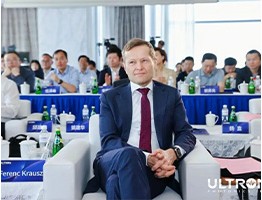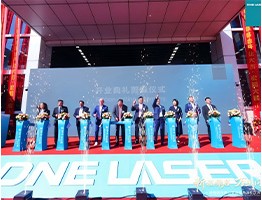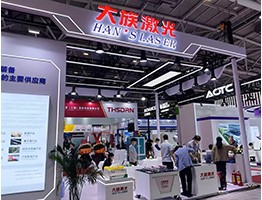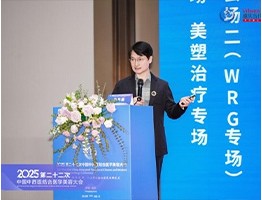Can excimer lasers replace femtosecond lasers?
source:Excimer Laser
keywords:
Time:2025-11-20
Source: Excimer Laser 7th Nov 2025
Excimer lasers and femtosecond lasers each have their own characteristics. In specific industrial and scientific research scenarios, excimer lasers may replace femtosecond lasers:
1. Material Processing Field
Advantage of ultraviolet cold processing: Excimer lasers (wavelength 193nm) directly break material molecular bonds through photochemical effects, making them suitable for high-precision and thermal-damage-free processes such as semiconductor lithography and flexible display manufacturing. For example, in MEMS micromachining, their pulse energy and nanosecond-level pulse width can achieve smooth microhole sidewalls, outperforming femtosecond lasers which suffer from low efficiency in this regard.
Cost-effectiveness: Excimer lasers adopt discharge excitation, and their equipment maintenance costs are significantly lower than those of femtosecond laser systems, making them suitable for large-scale industrial production lines.
2. Surface Treatment and Modification
Thin film deposition and etching: Excimer lasers excel in pulsed laser deposition (PLD) and fiber Bragg grating etching. Their ultraviolet wavelength can precisely control the material removal depth, while femtosecond lasers may induce nonlinear absorption effects due to their excessively short (femtosecond-level) pulses.
Polymer processing: Excimer lasers have higher ablation efficiency for organic materials (such as polyimide), making them suitable for the processing of complex structures like microfluidic chips.
3. Scientific Research and Detection Applications
Spectral analysis: The narrow ultraviolet spectrum of excimer lasers is an ideal light source for laser-induced breakdown spectroscopy (LIBS), outperforming the broadband characteristics of femtosecond lasers.
Plasma excitation: In laser nuclear fusion research, the high peak power (megawatt-level) of excimer lasers makes it easier to trigger plasma reactions, while femtosecond lasers rely on multi-pulse energy accumulation.
4. Special Material Processing
Internal processing of transparent materials: Although femtosecond lasers are proficient in three-dimensional processing of transparent materials, excimer lasers can achieve similar effects through multi-photon absorption mechanisms, with smaller equipment volume and higher stability.
metal surface cleaning: The ultraviolet light of excimer lasers can efficiently remove metal oxide layers, while femtosecond lasers may cause substrate damage due to thermal effects.
In summary, excimer lasers have irreplaceability in cost-sensitive scenarios, ultraviolet wavelength-dependent applications, and high-energy demand contexts, especially in the fields of semiconductor manufacturing and precision surface treatment.
 4th Collaboration! What Brought the Global Laser Academic Guru to Chinese Univs & Leading Firms?
4th Collaboration! What Brought the Global Laser Academic Guru to Chinese Univs & Leading Firms? DNE Laser Foshan Smart Manufacturing Base Grand Opening: New Brand Image Starts New Journey
DNE Laser Foshan Smart Manufacturing Base Grand Opening: New Brand Image Starts New Journey Live: DMP GBA Expo – Laser Hard Tech Leads Industrial Smart Manufacturing New Wave
Live: DMP GBA Expo – Laser Hard Tech Leads Industrial Smart Manufacturing New Wave Scientists Develop Palm-sized Short-pulse Laser System: Efficiency Increased to 80%
Scientists Develop Palm-sized Short-pulse Laser System: Efficiency Increased to 80% Global LiDAR Giants Engage in Escalating Patent Wars
Global LiDAR Giants Engage in Escalating Patent Wars
 Shi Lei (Hipa Tech): Focus on Domestic Substitution, Future Layout in High-End Laser Micromachining
Shi Lei (Hipa Tech): Focus on Domestic Substitution, Future Layout in High-End Laser Micromachining Optizone Technology: 17 Years Devoted to Optics – High-Power Optics Mass-Production Pioneer
Optizone Technology: 17 Years Devoted to Optics – High-Power Optics Mass-Production Pioneer Zhuojie Laser: Breaking barriers via tech breakthroughs, aiming to lead high-end light sources
Zhuojie Laser: Breaking barriers via tech breakthroughs, aiming to lead high-end light sources Dr. Sun Linchao: Pioneer and Leader in China's Field of Medical Aesthetic Laser Therapy
Dr. Sun Linchao: Pioneer and Leader in China's Field of Medical Aesthetic Laser Therapy Guo Guangcan, CAS Academician & USTC Professor: Four Decades Chasing Quantum "Light"
more>>
Guo Guangcan, CAS Academician & USTC Professor: Four Decades Chasing Quantum "Light"
more>>










